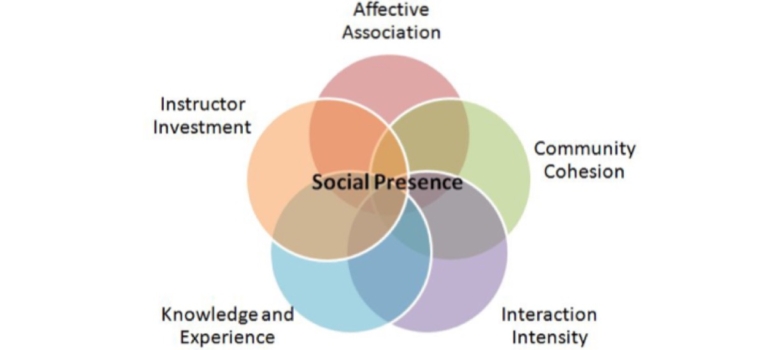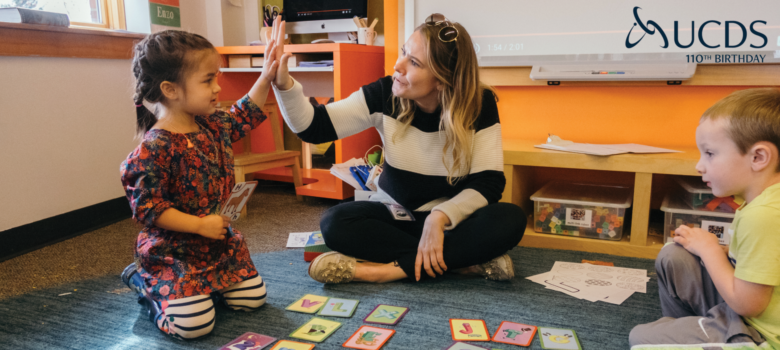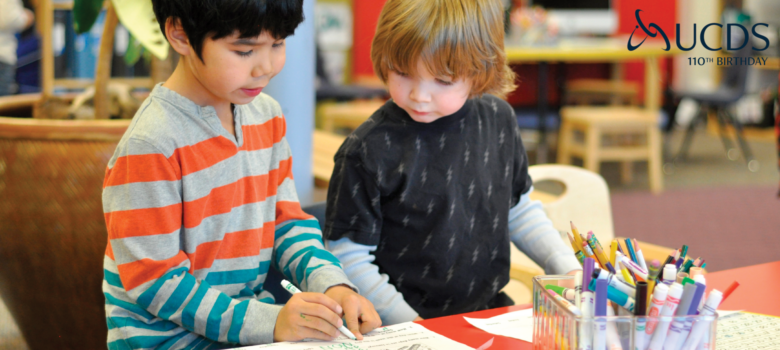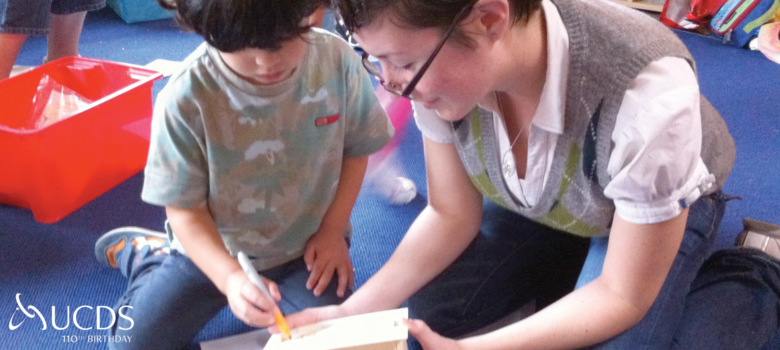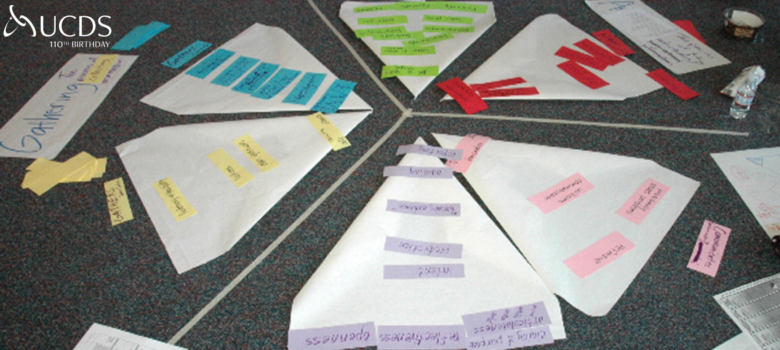by Elise Ricci, Development Director
The Social Presence Model is typically referred to in relation to students and teachers in an Online Learning environment. At UCDS in this extraordinary time, I’ve been thinking about ways for our community to stay connected in a virtual world in much the same way a teacher thinks about connecting with their students.
The Social Presence Model identifies five key factors that help maximize online learning experiences and engagement: affective association, community cohesion, interaction intensity, knowledge and experience, and instructor investment. Each plays a key role in creating a social presence among students. But what if we applied that same theory to our community at large? How have we adapted this year to create a social presence?
Community Cohesion
Community Cohesion represents the extent to which participants see the group as a community. This concept is examined through greetings and salutations used, referring to each other as a community, and the extent to which community members reference each other by name. In the virtual spaces UCDS has created, it is important to make space for welcoming remarks, introductions, and personal hellos. Community members may also choose to connect via text or social media platforms, saying hello or checking in with one another in the virtual space. All of these small interactions help build community cohesion. Even our in-person exchanges are layered; masks, six feet of distance, limited face-to-face interaction. So, the time we take to build these personal connection points virtually (or, brief in-person encounters) is important.
Interaction Intensity
Interaction Intensity refers to the level of interaction among participants, including paraphrasing, complementing, and asking questions. In UCDS’s virtual community environment, the students and teachers have the most opportunity to interact in this way. As a parent of a preschooler, I have listened to a few Zoom conversations and have been impressed with the virtual interaction among students. Teachers do a fantastic job of creating entry points for a variety of learners. For example, my daughter is pretty shy and not the best ‘Zoomer’ as a 4-year-old. However, she readily engages with several of the group games on Zoom. She particularly loves the ‘Guess Who’ game on Zoom, where teachers spin a wheel and a character or person pops up. The students all shout out simultaneously who they think the person is. Her attention is held, and she is eagerly waiting for the moment to shout-out her answer.
In terms of our parents’ interaction intensity, it’s a bit more challenging. However, UCDS continues to hold a variety of events – from parent/teacher conferences to parent association events, to brief pod-based drop-off/binder pick-up exchanges. We just had a new parent zoom call this morning, and it was nice to engage with families in a small group. Each parent on the call had an opportunity to share with the group, which helped build connections.
Knowledge and Experience
Knowledge and Experience involve the sharing of additional resources and experiences. UCDS has been fortunate that in this new virtual world, we have a wealth of knowledge, experience, and resources that have been shared with us from our external community members. For example, a UCDS parent who is a physician on the front lines is holding a few sessions for our faculty & staff to answer questions around COVID. Additionally, our PA Officers and Initiative Chairs have a wealth of knowledge around virtual and community-building events that will be shared with our entire community as the year unfolds. On the flip side, our internal team of teachers and administrators have shared online resources with our parent community and beyond. Last spring, during the early days of COVID, we created an open-source website with weekly student projects, resources, and distance learning tools that supported families from Seattle to France. Over 30,000 visits to the distance-learning website we created are a testament that UCDS’s teacher experience resonated with families near and far.
Affective Association
Affective Association addresses the emotional connections in the online course, or ‘environment’. UCDS’s virtual ‘community’ is a kaleidoscope of intersecting zoom meetings, conferences, phone calls, emails between students, teachers, parents, and administrators. All are personal depending on how families choose to engage/participate/emote! As a current parent, I’d put my engagement at a ‘medium’ level. I share my feelings most with my student’s teachers. Since I also work at UCDS, have several zoom conversations and a few in-person chats with my colleagues, which allows for additional humor, paralanguage, and self-disclosure. We have launched additional virtual zooms/events for families to attend this year, to help build these associations.
Instructor Investment
Instructor investment is the extent to which the instructor is an invested, active partner in the learning community. Of course, our teachers are absolutely invested in the learning community they create each day with their students. Likewise, our leadership team and administrators are actively leading this year in a way they have never had to before. Leading means something different than a typical year. Leading means committing to the health and safety of our students and community at large. It means educating our families on the nuances and intricate layers we are directing as best we can.
In the midst of the COVID pandemic, UCDS is committed to creating an active, vibrant, and curiosity-filled learning community for our students and families. We’re learning how to best navigate this challenging year as we go, and learning a lot in the process; with that, we hope to build out a community-wide social presence that extends to all members of our virtual community.

